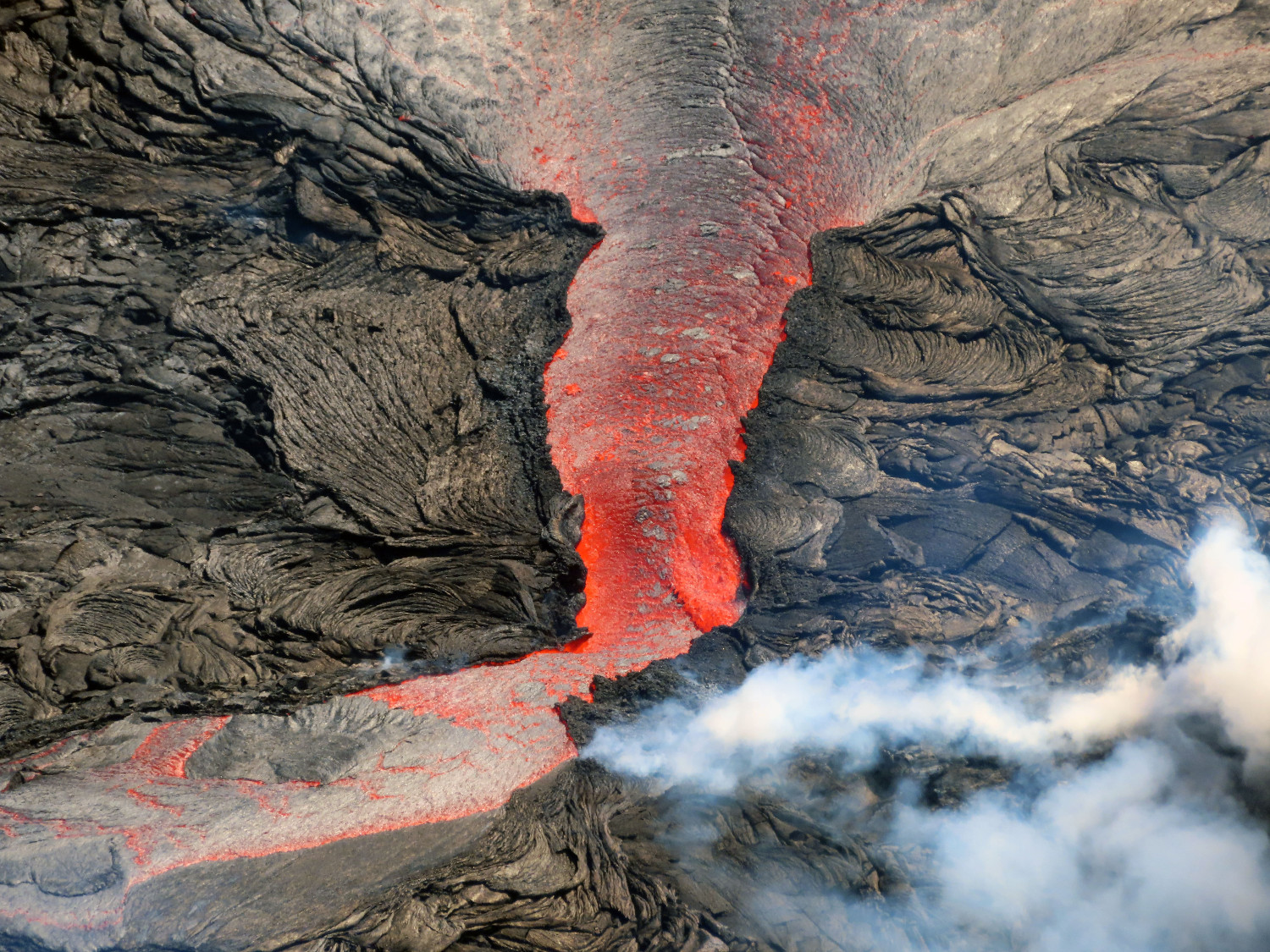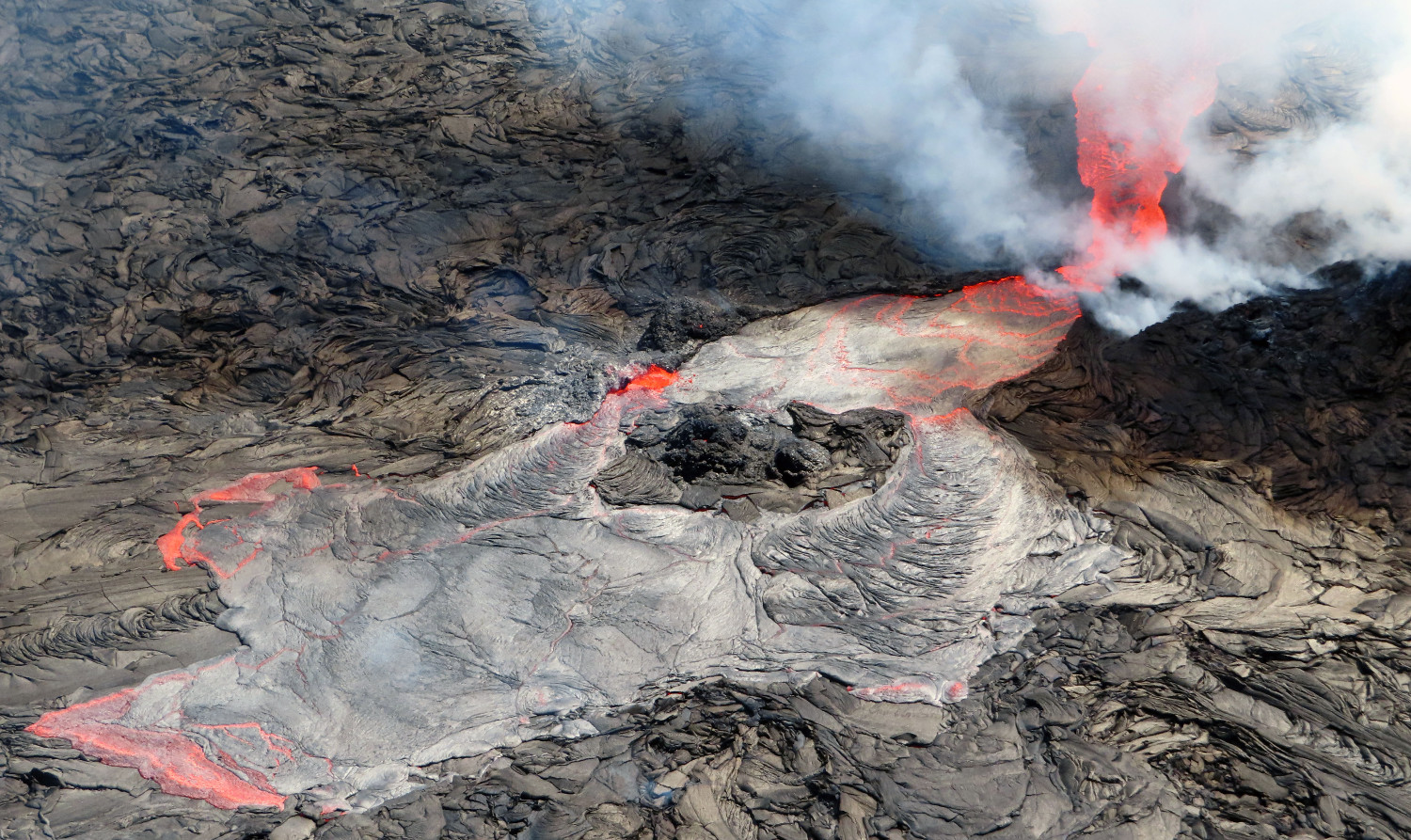
USGS: “A 1-meter (3-foot)-high standing wave was present in the spillway that is feeding the active portion of Kīlauea’s summit lava lake, as seen from the west side of Halema‘uma‘u crater.” (USGS photo by L. Gallant)
(BIVN) – The eruption on the summit of Kīlauea volcano continues, with lava effusion ongoing within Halemaʻumaʻu crater.
After another brief pause in the on-again off-again activity, the summit eruption resumed at approximately 2:30 a.m. HST on Thursday morning. The resumption corresponded with an inflationary signal that started at approximately 5 p.m. HST on February 16, the USGS Hawaiian Volcano Observatory reported.
Since then, the effusion rate for the summit eruption decreased starting at 6 p.m. HST on Thursday, corresponding with a switch to deflationary tilt and a drop in volcanic tremor.
On Friday, the USGS reported:
Halemaʻumaʻu Lava Lake Observations: Effusion of lava continues this morning but the rate of effusion has dropped starting at 6: pm HST on February 17, 2022. Over this time period the level of the western lava lake has dropped by approximately 10 m (33 ft). There have been few to no ooze outs along the margins of the lava lake over the past 24 hours. This decreased effusive activity corresponds with a drop in tilt from +0.5 to -1.0 microradians followed by a decrease in tremor at the summit. The active lava lake is now approximately 89 meters (292 feet) deep relative to when lava emerged on September 29, 2021. Measurements on January 25, 2022, indicated that the total lava volume effused since the beginning of the eruption was approximately 45 million cubic meters (12.0 billion gallons) at that time.
Summit Observations: Summit tiltmeters indicate the start of a deflationary event starting at 6:00 pm HST on February 17, 2022. Seismic data shows that the volcanic tremor signal started to decrease a few hours after the deflationary event started. Earthquake activity at the summit remains below background level. A sulfur dioxide (SO2) emission rate of approximately ~2800 tonnes per day (t/d) was measured February 14.
Rift Zone Observations: No unusual activity has been noted along the East Rift Zone or Southwest Rift Zone; low rates of ground deformation and seismicity continue along both. Measurements from continuous gas monitoring stations downwind of Puʻuʻōʻō in the middle East Rift Zone remain below detection limits for SO2, indicating that SO2 emissions from Puʻuʻōʻō are negligible.
The current USGS Volcano Alert Level for Kīlauea remains at WATCH.


by Big Island Video News1:09 pm
on at
STORY SUMMARY
HAWAIʻI VOLCANOES NATIONAL PARK - The eruption of Kīlauea continues at the summit, with no indications of activity migrating elsewhere on the volcano.